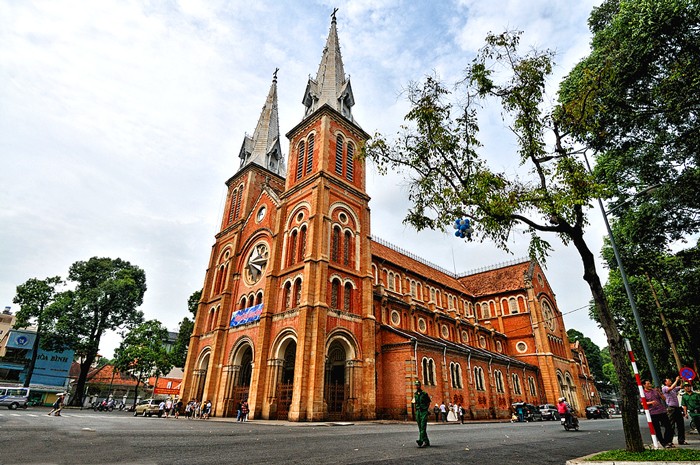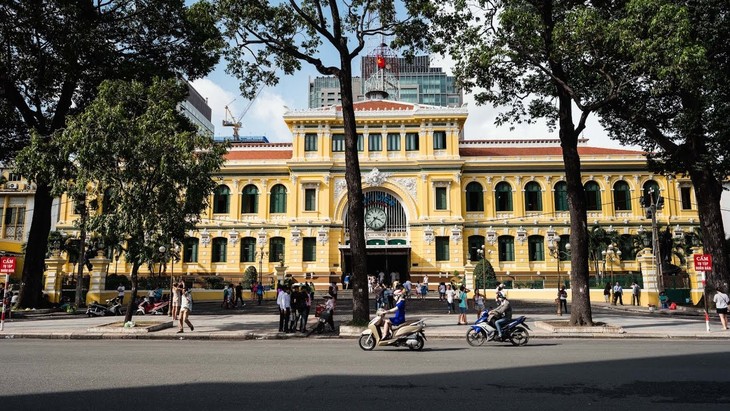(VOVWORLD) - Ho Chi Minh City (known as Saigon until 1976, after Vietnam’s reunification) has long had a reputation for being cosmopolitan. This week’s Culture shines a spotlight on how the city is struggling to protect its 300-year architectural heritage in the face of strong economic development and rapid urban renewal.
 Notre Dame Cathedral in Ho Chi Minh City. (Photo: internet) Notre Dame Cathedral in Ho Chi Minh City. (Photo: internet) |
Ho Chi Minh City has 172 historical relics but only 40 of them are promoted as tourist attractions. The 10 must-see landmarks in the city include Notre Dame Cathedral, the Central Post Office, Ben Thanh market, and the municipal People’s Committee offices.
A story in late 2018 on preserving Thuong Tho Palace rang the alarm on the urgency of developing a heritage master plan as part of Ho Chi Minh City’s urban development strategy to ensure conservation of its architectural heritage. Built in the 1860s to serve as Cochinchina's Home Office, the Thuong Tho Palace at 59-61 Ly Tu Trong Street, District 1 is today the headquarters of the Ho Chi Minh City’s Department of Information and Communications and Department of Industry and Trade.
HCM City has 3,000 historical houses and villas that should be preserved, but are likely to be demolished. 1,300 of those houses were built before 1975 and many of them are privately owned, leading to difficulties in preservation. Archaeologist Nguyen Thi Hau, secretary general of the HCM City History Science Association, said the city needs a master plan to balance urbanization and preservation of the city’s remaining heritage.
“The government, property developers, researchers, and the community all have a role in preserving the city’s architectural heritage. The municipal authorities need to complete urban planning, strengthen existing regulations, and create new laws on preserving heritages,” said Hau.
Tran Van Khai of HCM City University of Architecture says most people are unaware of the economic value of architectural heritage, which is the key to the current problem.
"The government can do a lot for this effort by adjusting land use planning, investment in infrastructure at the grassroots level, and tax policies. Government policies should support people who own heritages by finding ways for them to earn good money from their heritages," said Khai.
 HCM city's central Post Office. (Photo: internet) HCM city's central Post Office. (Photo: internet) |
Cao Thanh Nghiep, a member of the Ho Chi Minh City Architecture Association, said architectural heritage must be credited for its potential economic value. In many countries, historic buildings are preserved for aesthetic reasons as well as for the huge economic benefits they offer.
"Once preservation work is done properly in the central areas, urban planning of nearby districts will also be well taken care of. The city should make a list of buildings in dire need of preservation without waiting for them to be listed as national heritages," said Nghiep.
Truong Kim Quan, Director of Ho Chi Minh City’s Monuments Conservation Center, said: "Buildings surrounding architectural heritages should play a supporting economic role as they will benefit a lot from the heritages."
Poor preservation of historic heritages could reduce the number of cultural tourists who otherwise would stay longer, take part in more cultural activities, and spend more money. Experts say that many people are not aware that when they destroy heritage buildings they are in fact losing a potential economic value.